 Drying Technology
Drying Technology
Project Planner:Guangzhou SHINCCI Energy Equipment Co., LTD.
Service Object:FOSHAN CITY JIALIDA ENVIRONMENTAL PROTECTION TECHNOLOGY CORP.
Time Period:Oct. 2018- Feb. 2019
CHP(COGENERATION) Circular Economy Industry Demonstration Project in JIALIDA, FOSHAN
Low Temperature Mass Sludge Drying and Incineration Disposal
【Guide】:
The sludge project of FOSHAN JIALIDA Sludge Disposal Center has a daily treatment capacity of about 1.000 MT of wet sludge. The project uses a combination of low-temperature drying + incineration technology to achieve energy recycling and sustainable development and disposal goals, and minimize pollution emissions.The main process units include: industrial park sewage treatment, pending sludge drying reduction, dry sludge Utilization of blending by thermal power plant, industrial park production heat supply, dryer heat source recycle and reuse as well as other process, which formed an industrial chain that has the characteristics of circular economy and can be replicated and promoted, known as Sludge Treatment Demonstration Base in FOSHAN city. This project was rated as "Excellent Case of Chinese Sludge Treatment and Disposal in 2018-2019" by China Water Network.
Sludge treatment circular economy industrial chain
At present, there are still many serious problems in the sludge treatment field in China, such as water and soil pollution, unclear treatment process route, unknown disposal destination, and low utilization rate. Through analysis of the typical project case, this article will share the latest achievements of SHINCCI in sludge reduction, harmlessness, stabilization and recycling, and hopes to discuss the model and countermeasures for the development of circular economy in the sludge treatment-field.
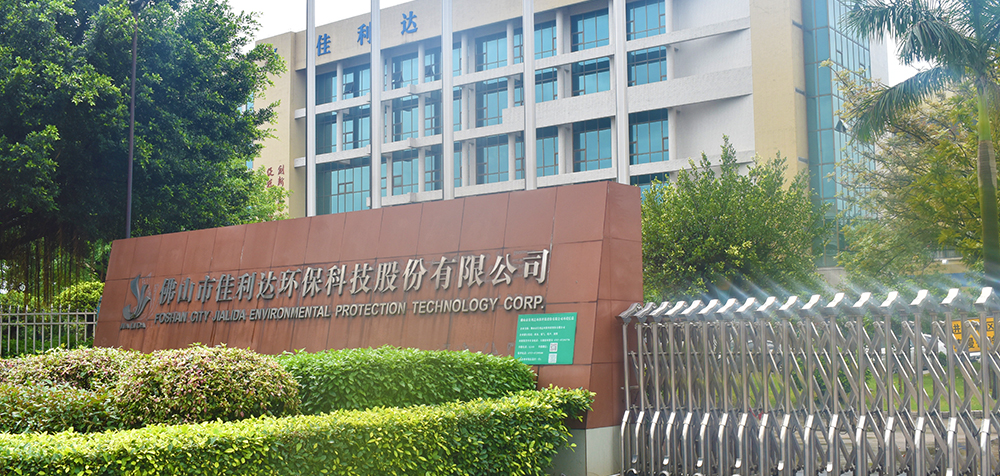
As the largest domestic sludge low-temperature drying monomer project, JIALIDA sludge project handles about 1.000 tons of wet sludge per day. More than 10 steam absorption heat pump belt sludge dryers SBHWHD50000 are selected from SHINCCI. The daily wet sludge treatment capacity of a single device can reach 80 tons. There are over ten dry chemical lines have been completed for now.
The process of the sludge project of FOSHAN JIALIDA Sludge Disposal Center adopts a cycle that conforms to cleaner production, minimizes pollutant emissions, and a sustainable development technology route. The main process units include: industrial park sewage treatment, sludge drying reduction, dry sludge thermal power plant co-firing and utilization, industrial park production heat supply, drying machine heat source recycling and other transformations, forming a circular economy feature It can be replicated and promoted by the industrial chain of sludge drying and resource utilization.
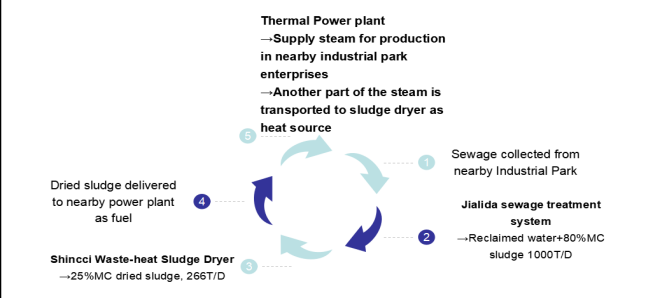
Flow chart of sludge circular economy industry chain __↑
Over View of Foshan Jialida Sludge Drying Project
Project Name: FOSHAN SANSHUI District Sludge Centralized Disposal Center Construction Project;
Builder: FOSHAN JIALIDA Environmental Protection Technology Co., Ltd .;
Construction Site: DATANG Industrial Park, SANSHUI Industrial Zone, FOSHAN City
Construction Time: Oct. 2018- Feb. 2019
Construction Content: sludge storage and transportation system, drying and electric coal blending and burning system, exhaust gas purification and treatment, electrical automatic control instrument system and its auxiliary system, etc.
Treatment Scale: Collecting, storing, treating printing and dyeing sludge and sewage treatment sludge produced by urban centralized domestic sewage treatment plants totaling 1.000 tons / day (water content 80%) to 266 tons / day (water content 25%
Disposal Process: The sludge is dried, mixed with electric coal at a mixing ratio of about 5%, and sent to the JIALIDA Thermal Power Plant boiler for incineration.
Main Engineering Unit
Main project: a more energy-saving and environmentally friendly low-temperature drying workshop, which will dry wet sludge (water content 80%) to dry sludge (water content 25%).
Storage and transportation project: Newly set up wet sludge temporary storage room, containing grab and feeding device.
Dry sludge tank: A new dry sludge storage tank is installed on the first floor of the production workshop, which is closed.
Sludge conveying system: including bucket elevator, screw conveyor, feeder, etc., fully enclosed.
Relying on the project: JIALIDA Thermal Power Plant's thermal coal blending will not change. The dry sludge and thermal coal will be mixed at a certain ratio and sent to JIALIDA Thermal Power Plant's boiler for incineration.
Project key points and advantages
Sludge drying is the first step of resource utilization. This system breaks the isolation of industry technologies from each other, and becomes a key system in the full-chain sludge treatment technology of front-end dehydration + low temperature DEHUMIDIFICATION drying + incineration to achieve sludge treatment and disposal Closed-loop convergence of technology. This combined technical solution not only improves the dehydration efficiency, but also saves operating costs.
Regeneration cycle mesh belt drying
The belt-type sludge dryer uses the continuously circulating dry air to take away the moisture of the sludge on the mesh belt in the drying tunnel, so that the volume and weight of the sludge are reduced. The dehydrated sludge is distributed on the air-permeable mesh belt. The mesh belt is slowly sent forward in the drying tunnel, and the continuously circulating dry air evaporates the sludge moisture. The entire drying process is carried out in a sealed environment, and no odor and dust will escape. Low temperature drying (80 ℃) can fully avoid the VOLATILIZATION of different types of organic matter in the sludge and avoid the VOLATILIZATION of malodorous gas.
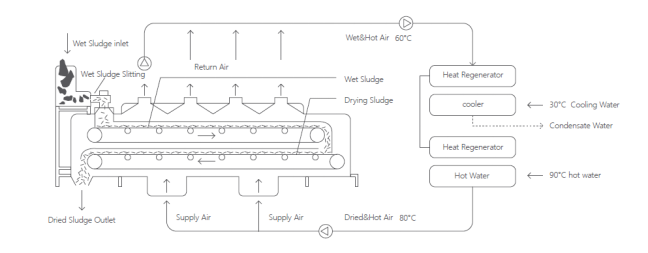
Steam absorption heat pump
Through the absorption heat pump, the heat of the cooling circulating water in the dryer is recovered as a heat source, and the heat circulating water in the dryer is released. Not only can the heat of the cooling water (42 ° C) be used to heat the dryer Heat circulation water (70 ℃), reuse heat source steam, reheat the heat circulation water to 90 ℃, and use it as the heat source of the dryer, thereby greatly reducing the steam consumption of the equipment and further improving the energy efficiency of the drying equipment.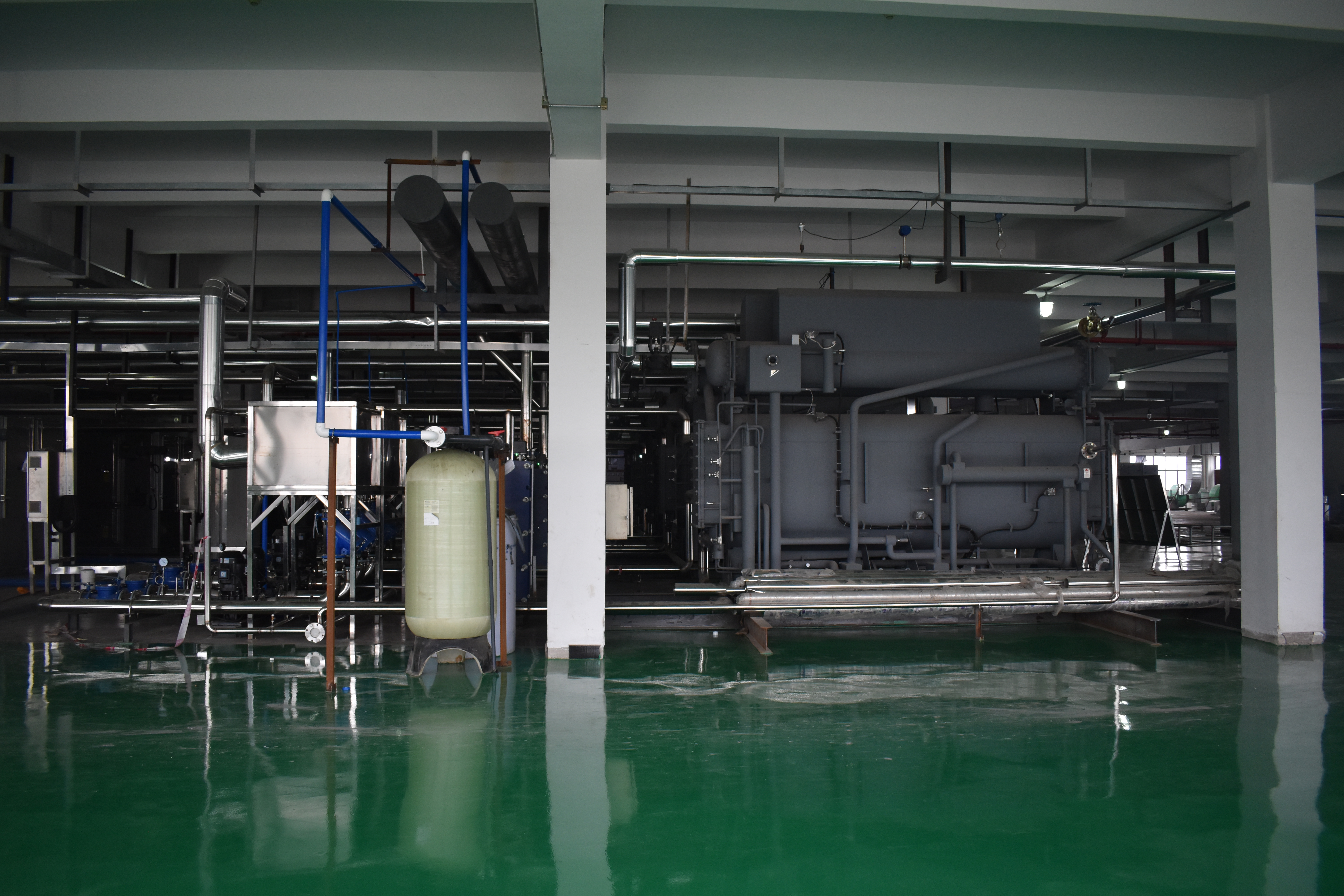
Dust and temperature control
During the drying process of the SHINCCI low-temperature drying system, the sludge is spread statically, there is no mechanical static friction with the contact surface, and there is no "adhesive phase" stage. The dust concentration during the drying process can be controlled <60mg / m3. without the risk of dust explosion; The temperature is low (<50 ℃), no cooling is required, and it can be directly stored or put into a ton bag.
Efficient and resourceful
The sludge with 83% moisture content can be directly dried to 10% without sectional disposal, such as: plate and frame pressure filtration + thermal drying, thin layer drying + belt drying, etc .; there is no loss of organic matter in the drying process, dry The material has a high calorific value and is suitable for later resource utilization; the reduction in capacity can reach 67% and the weight reduction can reach 80%, which can save a lot of later transportation costs, and can be suitable for sludge drying with a water content of 83% to 50%.
Condensate waste water discharge
The effluent from this project is mainly drying and condensing waste-water, which mainly contains sulfide, and the content of other pollutants is relatively small, and is discharged to the DATANG sewage treatment plant for treatment.
Dry mud storage tank and mixed burning
The dry mud storage tank with a water content of 25% is collected and transported by the vehicle to the nearby JIALIDA Thermal Power Plant, mixed with coal at a rate of about 5%, and then mixed with coal for power generation.
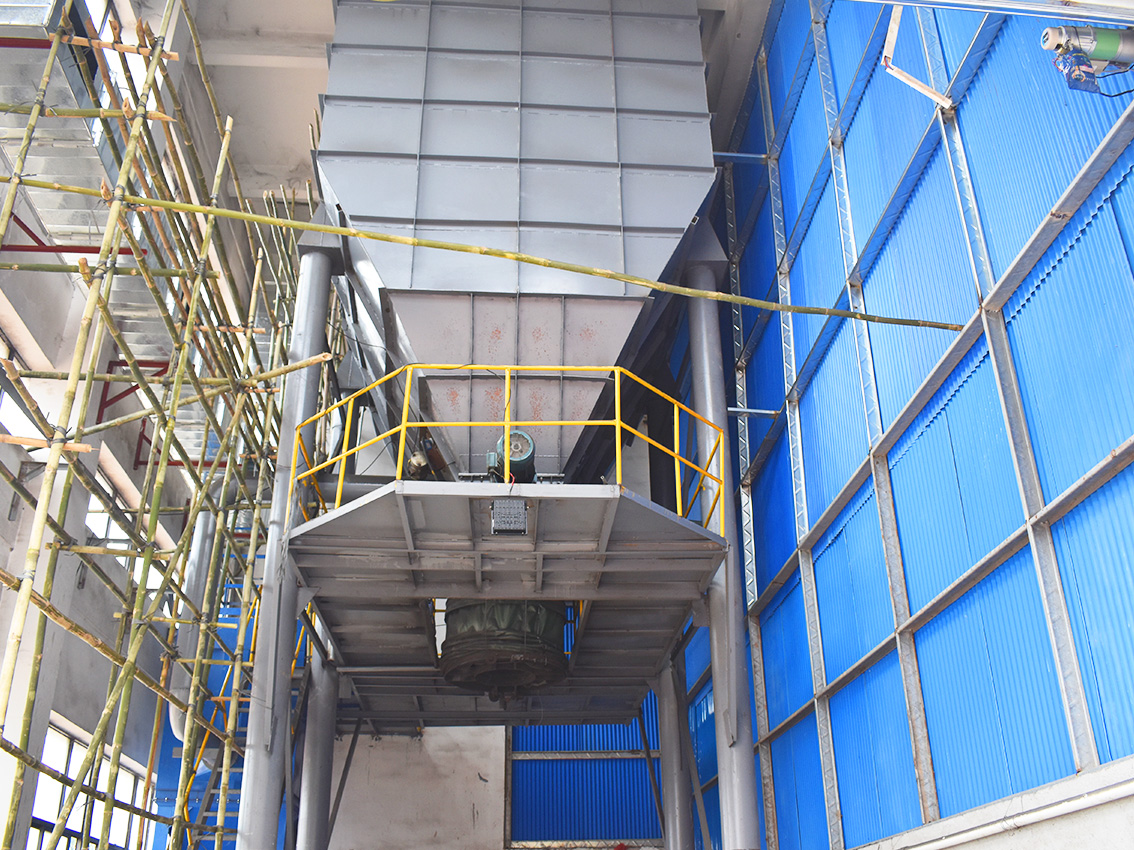
Project implementation effect
After the renovation and expansion, the scale of sewage treatment sludge collected, stored and treated in the SANSHUI District Sludge Centralized Disposal Center in SANSHUI District of FOSHAN City and the urban centralized domestic sewage treatment plant increased to 1.000 tons / day (water content 80% ), After low-temperature drying to 25% moisture content, it is sent to FOSHAN JIALIDA Environmental Protection Technology Co., Ltd. Thermal Power Branch and electric coal for blending and burning, which realizes sludge reduction, harmless and resourceful disposal and utilization.
Evaluation by all parties
On May 19. 2019. Mayor Tang of FOSHAN City and the Director of the Ecological Management Bureau went to FOSHAN JIALIDA Sludge Centralized Disposal Center to investigate and investigate FOSHAN JIALIDA Sludge Low-temperature Drying and Harmless Reduction Project. Mayor Tang and other government delegations conducted a survey and investigation, which fully reflected the concern and support of the municipal government leaders for the development of the local environmental protection cause and the high recognition of the heat pump low temperature drying technology.